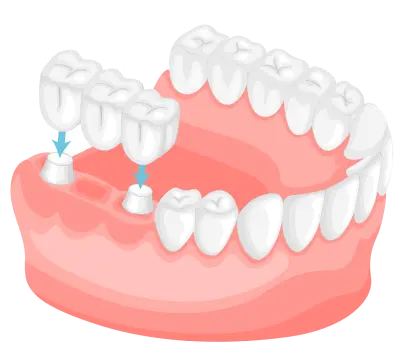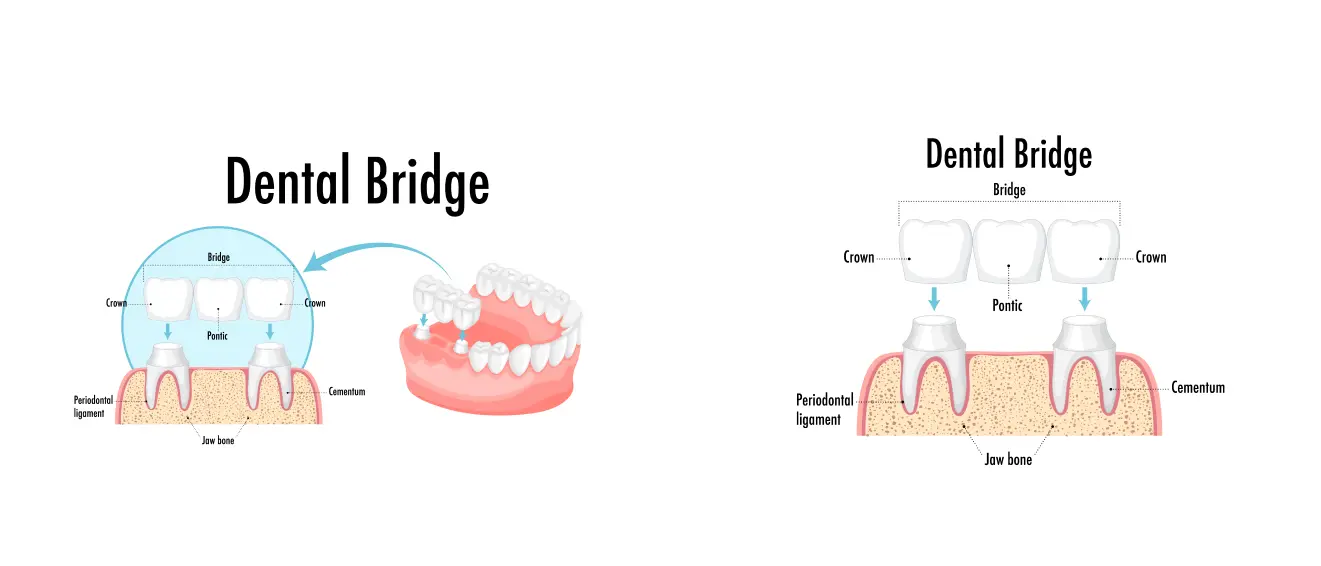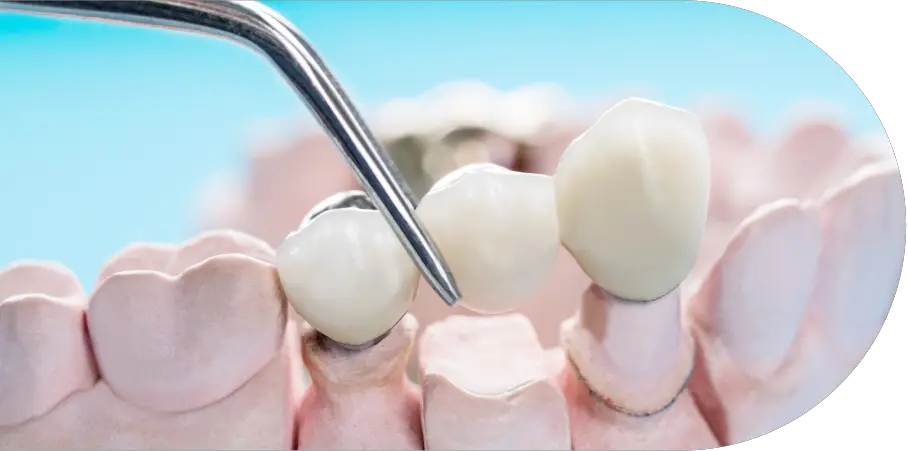
A dental bridge is a fixed restoration that replaces missing teeth by connecting artificial teeth to natural teeth or implants. It restores your smile's appearance, speech, and chewing function.




On average, the lifespan of a dental bridge is five to 15 years. Some can last even longer with proper care and maintenance. You may hear dentists call these “permanent bridges.” They're permanent in the sense that only a dentist can remove them.
The most common is when a temporary bridge is first put in, and your mouth is adjusting to it. This can cause some soreness and discomfort, but it should go away within a few days.
Traditional bridges are the most popular types of dental bridges. They are used when your natural teeth surround a missing tooth or gap on both sides. These bridges consist of one or more pontic teeth that are held in place by two abutment teeth.
Bridges are not as strong as dental implants, which can make for a weaker bite. Bridges require work on surrounding teeth, while dental implants do not. Because bridges do not replace the root of the missing tooth, bone loss may continue unabated.